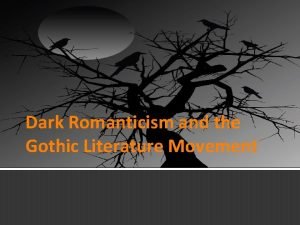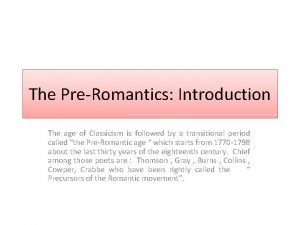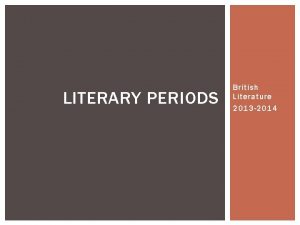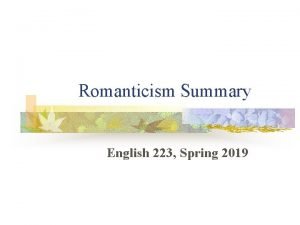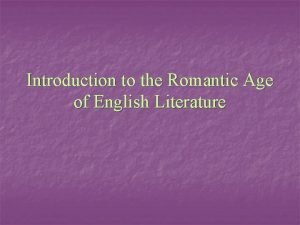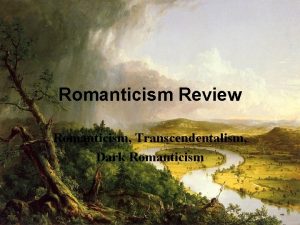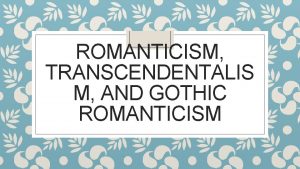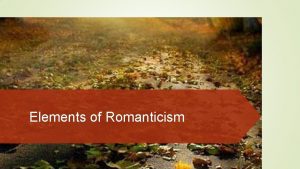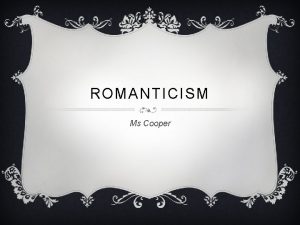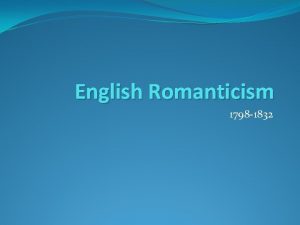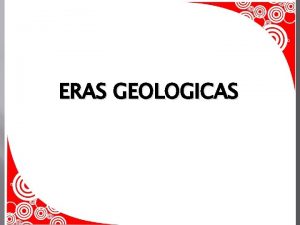Eras of Lit Romanticism AP ENGLISH LIT Essential







- Slides: 7

Eras of Lit: Romanticism AP ENGLISH LIT

Essential Questions What can people learn from nature? Is emotion stronger than reason? When is the ordinary extraordinary? How does war change our values?

Flowering of Romanticism (1798 -1832) Enlightenment ideals give way to grim realities ◦ France’s revolution ◦ Industrial Revolution Romantic writers search for truth in its purest state ◦ Nature – wild and majestic ◦ Inside themselves – passion Publication of The Preface to Lyrical Ballads

”The Chimney Sweeper” by William Blake 1. Annotate important words or phrases as we read the two poems aloud. 2. Work with your table partner to paraphrase the two poems 3. Create a Venn Diagram comparing and contrasting the two poems

Romantic Poetry’s Defining Features A New Concept in Poetry ◦ Shift in focus from human behavior to human emotion A New Spontaneity and Freedom ◦ Wordworth describes poetry as “the spontaneous overflow of powerful feeling” ◦ Moving from artificiality to authenticity and freedom Love of Nature ◦ Not just describing, but using nature as a catalyst to explore their own thoughts and feelings Importance of the Commonplace ◦ Humble subjects and celebrated ordinary things

Romantic Works

“She Walks in Beauty” by Lord Byron 1. Annotate important words or phrases as we read the poem aloud. 2. Work with your table partner to paraphrase each stanza. 3. Discuss how the author uses connotation, imagery, and figurative language to develop his central idea 4. Identify one or two labels for the tone these literary devices develop.
